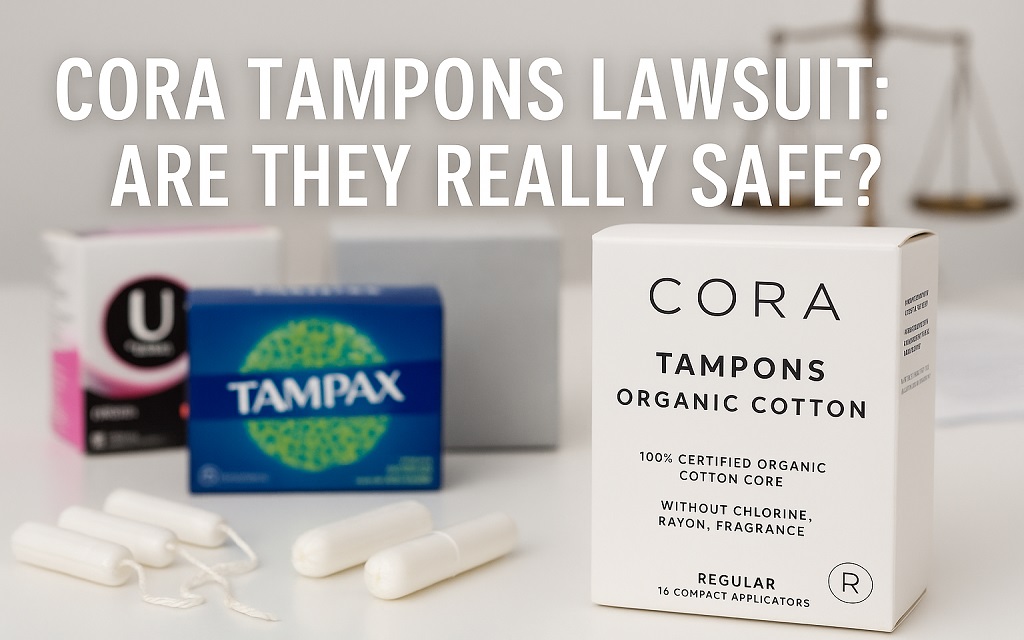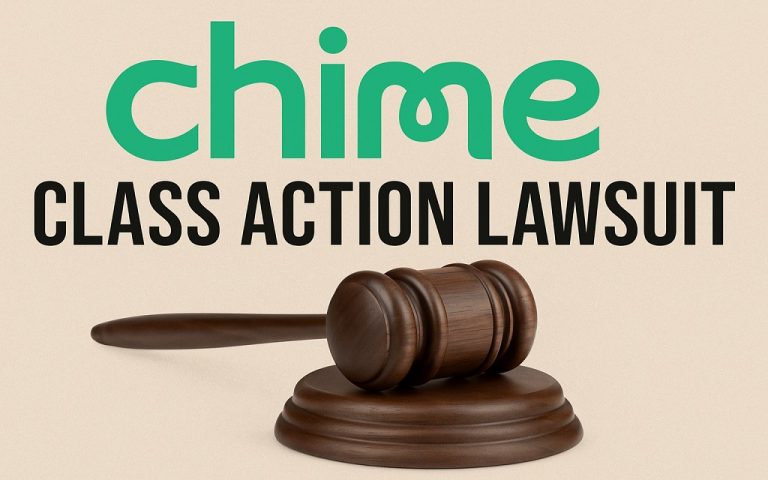In recent months, concerns about the safety of organic tampons have increased due to lawsuits against several well-known brands. These lawsuits allege contamination with heavy metals, synthetic ingredients, and false advertising of “100% organic” labels. While some brands have been named in these lawsuits, Cora tampons have not faced legal action—yet many users are still asking: Are Cora tampons safe? This article provides a comprehensive examination of the Cora tampons lawsuit speculation, outlines the science behind tampon safety concerns, and explains why Cora remains free from legal claims, for now.
Table of Contents
- What Sparked the Lawsuits Against Organic Tampon Brands?
- Cora Tampons: Company Background and Claims
- Are There Any Lawsuits Against Cora?
- What the Science Says: Heavy Metals in Tampons
- What Makes a Tampon Truly Organic?
- Common Legal Claims in Tampon Lawsuits
- What Consumers Are Saying About Cora
- Regulatory Oversight and Gaps in the Feminine Hygiene Industry
- Could Cora Face Future Legal Action?
- How to Choose Safe Tampons: What You Can Do
- Final Thoughts: The Truth Behind the “Cora Tampons Lawsuit”
What Sparked the Lawsuits Against Organic Tampon Brands?
In 2024, lawsuits emerged against brands like LOLA and L. (by Procter & Gamble) for allegedly misleading customers about the ingredients used in their organic tampons. Plaintiffs claimed that these products contained synthetic materials, such as paraffin wax and titanium dioxide, both of which are considered questionable when inserted into the body internally.
The lawsuits also referenced findings from a 2024 study in Science of the Total Environment, which detected heavy metals such as lead and arsenic in 14 out of 30 tampon brands.
Cora Tampons: Company Background and Claims
Founded with a mission to deliver clean, organic feminine care, Cora markets its tampons as toxin-free and made with 100% certified organic cotton. Their product pages emphasize:
- Chlorine-free processing
- No rayon, pesticides, dyes, or fragrances
- Hypoallergenic materials
This branding positions Cora as one of the most “natural” options in the menstrual care market.
Are There Any Lawsuits Against Cora?
As of June 2025, Cora has not been named in any active lawsuits involving product safety, false advertising, or heavy metal contamination.
This sets it apart from competitors like:
- LOLA (Alyk, Inc.): sued for design defects causing infections
- L. by Procter & Gamble: facing claims of synthetic ingredients in “organic” products
That said, Cora is mentioned frequently in social media conversations about tampon safety, with some users alleging inconsistent product quality or changes in manufacturing.
What the Science Says: Heavy Metals in Tampons
A widely cited 2024 study revealed that many tampon brands contained trace levels of heavy metals, including:
- Lead
- Cadmium
- Arsenic
- Mercury
These metals can accumulate in the body and may lead to long-term health issues such as hormonal disruption or reproductive toxicity.
Key finding: The presence of heavy metals was not limited to non-organic brands. Even some labeled as “100% organic” tested positive, possibly due to contaminated cotton fields or industrial processing equipment.
Important: There is currently no public data showing that Cora tampons have tested positive for heavy metals, nor has Cora been included in the brands tested in these studies.
What Makes a Tampon Truly Organic?
According to the Global Organic Textile Standard (GOTS), for a tampon to be certified organic, it must:
- Contain 95% or more organic fibers
- Avoid the use of specific synthetic agents
- Be manufactured in an eco-compliant facility
Consumers often misunderstand what “organic tampon” means. Some brands label their products as organic but only apply that to the cover or tip, not the absorbent core.
Cora claims complete transparency in labeling, but the lack of industry regulation raises questions even for trusted brands.
Read Must: QC Kinetix Lawsuit: What Should You Know About Legal and Medical Risks?
Common Legal Claims in the Cora Tampons Lawsuit
Tampon lawsuits usually involve the following legal grounds:
- Product Liability: When tampons are linked to physical harm (e.g., infections, toxic shock)
- False Advertising: Using terms like “organic” or “toxin-free” without scientific backing
- Negligence: Failing to disclose risks or ingredients
- Breach of Warranty: Promising product purity or effectiveness without delivering
Many consumers are now more informed, leading to increased legal scrutiny of feminine hygiene products.
What Consumers Are Saying About Cora
Reddit threads and TikTok videos feature both praise and criticism for Cora tampons. Common themes include:
Positive Feedback:
- “Helped reduce irritation”
- “Love the biodegradable packaging.”
- “Feels safer than drugstore brands”
Negative Comments:
- “New batches feel drier.”
- “Increased clotting”
- “Packaging feels different—did the formula change?”
While anecdotal, these reviews influence consumer trust and brand perception. Cora needs to maintain ingredient transparency to avoid future legal scrutiny.
Regulatory Oversight and Gaps in the Feminine Hygiene Industry
In the U.S., tampons are classified as Class II medical devices, meaning they require FDA clearance but not complete testing for every ingredient.
Regulatory shortcomings include:
- No mandatory disclosure of all ingredients
- No requirement for heavy metal testing
- No third-party auditing for “organic” claims
This leaves room for mislabeling and contamination, which have been the foundation of recent class-action lawsuits.
Could Cora Face Future Legal Action?
Although no lawsuits have targeted Cora yet, future claims could arise if:
- Independent testing reveals heavy metals or synthetics
- Packaging or labeling becomes misleading
- Consumer reports increase regarding side effects
With increased public interest in toxic-free menstruation products, Cora must maintain transparency, third-party testing, and user safety to avoid joining the list of sued brands.
How to Choose Safe Tampons: What You Can Do
If you’re concerned about tampon safety, here’s how to protect yourself:
- Look for GOTS-certified organic cotton tampons
- Choose brands with third-party lab testing
- Avoid tampons with fragrances, dyes, or bleaching agents
- Read recent reviews from other users
- Limit daily tampon use and alternate with pads or cups
Pro tip: Search phrases like “safe tampons without titanium dioxide” or “best organic tampon without rayon” to narrow down safe options.
Conclusion: The Truth Behind the “Cora Tampons Lawsuit”
Despite the online buzz and rising concerns, there is currently no Cora tampons lawsuit. The brand stands apart from others, such as LOLA and L. Inc., which are currently facing legal battles over safety and ingredient transparency.
That said, Cora is not immune to scrutiny. In today’s climate, consumer trust hinges on proof, not promises. Brands must provide transparent ingredient lists, testing certifications, and responsive customer service to avoid courtrooms and maintain trust in homes.
If you use or plan to use Cora, stay informed, read labels, and prioritize health over branding.
Disclaimer: This article provides a general overview of the Cora Tampons Lawsuit, based on publicly available information, and is intended for informational purposes only. It does not constitute legal advice.




